Confined Space Rescue Drills
Confined spaces pose a unique set of hazards that can lead to severe injuries or fatalities if not correctly managed. Whether it’s a storage tank, silo, or underground tunnel, confined spaces are often characterized by limited access, poor ventilation, and the potential for toxic atmospheres. In an emergency, quick and effective response is crucial, and confined space training and drills are vital in ensuring workers are prepared for real-life situations. These drills equip workers and rescuers with the skills, knowledge, and experience to respond swiftly and efficiently. This article explores how to conduct confined space rescue drills effectively.
Developing a Comprehensive Rescue Plan
Before conducting any drill, it’s crucial to have a well-developed confined space rescue plan in place. This plan outlines the roles and responsibilities of all team members, the specific hazards associated with the confined space, and the procedures for entering and exiting the space safely. The rescue plan should also cover the types of emergencies that may occur. Varying scenarios require different techniques and equipment, so the rescue plan should be adaptable to various situations. Clear communication is essential, and the plan should establish how workers inside the confined space will communicate with attendants and rescuers outside.
Practicing with the Right Equipment
A key aspect of confined space rescue drills is practicing with the correct safety and rescue equipment. Rescue personnel should be fully trained using equipment such as retrieval systems, air monitors, breathing apparatuses, and harnesses. Each piece of equipment has its specific use, and using it correctly can be the difference between a successful rescue and a tragic outcome. For example, a tripod and winch system is often used for vertical entry and rescue in confined spaces. During a drill, workers and rescuers should practice setting up and operating this equipment, ensuring that it is adequately secured and that they know how to retrieve a worker from the space safely.
Simulating Realistic Scenarios
One of the critical elements of an effective confined space rescue drill is simulating realistic emergency scenarios. Drills should mimic the kinds of situations workers may face in the confined space they regularly work in. For instance, if workers frequently operate in tanks with the potential for gas leaks, a drill should simulate a gas leak emergency. If structural collapse is a risk, a drill can involve a scenario where a worker is trapped by debris. These realistic simulations improve skill levels and help build the confidence of rescuers and workers, enabling them to stay calm under pressure.
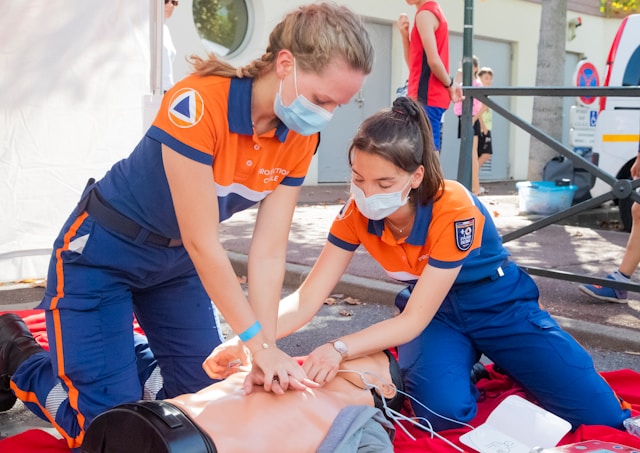
Evaluating and Improving Rescue Performance
After each rescue drill, it’s essential to evaluate performance to identify areas for improvement. A post-drill review allows the rescue team to discuss what went well and what could be done better. This includes assessing the speed of the rescue, the effectiveness of communication between team members, and the proper use of equipment. Feedback from all participants, including the workers involved in the drill, should be considered when refining rescue procedures. This review process is critical for continuous improvements and ensuring the rescue team is always prepared for real-life emergencies.
Conclusion
Confined space rescue drills ensure worker safety and prepare teams to respond to emergencies effectively. These drills enhance rescue response times and save lives, providing workers and rescuers with the knowledge and confidence needed to handle confined space …

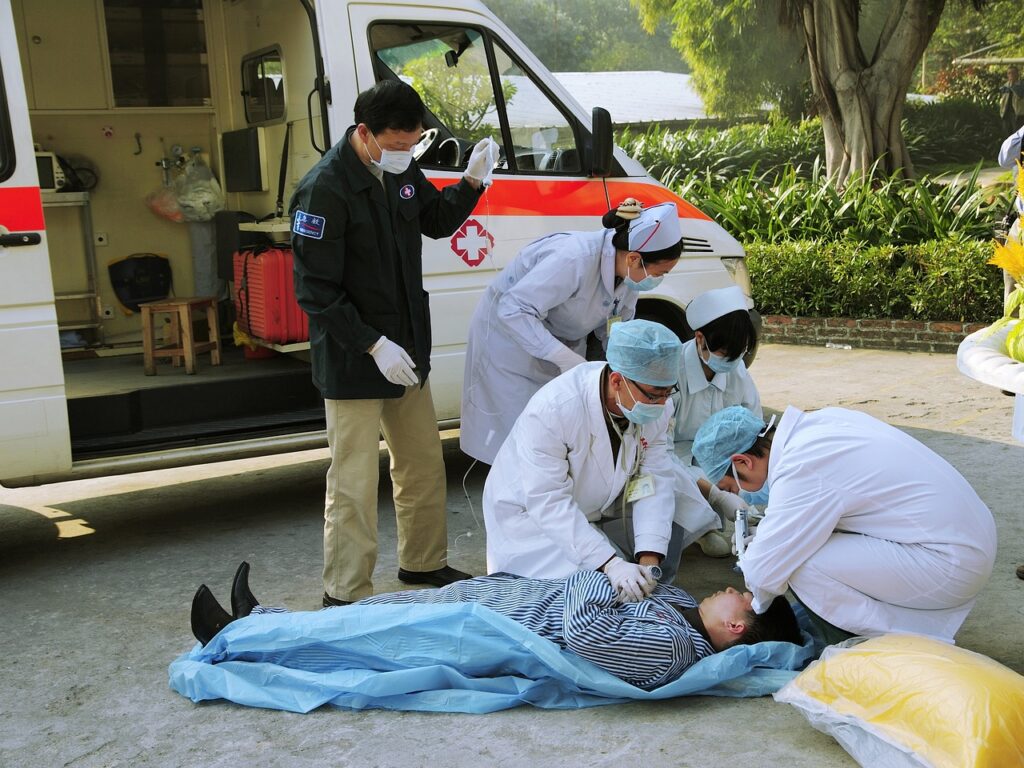




 Search engines are constantly changing their algorithms to provide the
Search engines are constantly changing their algorithms to provide the  Finally, tracking and analyzing your SEO performance over time is important. By doing this, you can identify areas of your website that need improvement and make the necessary changes to ensure that your long-term SEO strategy is successful. This includes analyzing keyword rankings, tracking website visits and conversions, monitoring competitor activities, and more. A long-term SEO strategy is essential for success in search engines. By staying on top of algorithm changes, creating content that provides value to visitors, building links from other websites to yours, and monitoring your performance over time, you can ensure that your website is optimized for the latest search engine guidelines and continues to rank well in the SERPs.…
Finally, tracking and analyzing your SEO performance over time is important. By doing this, you can identify areas of your website that need improvement and make the necessary changes to ensure that your long-term SEO strategy is successful. This includes analyzing keyword rankings, tracking website visits and conversions, monitoring competitor activities, and more. A long-term SEO strategy is essential for success in search engines. By staying on top of algorithm changes, creating content that provides value to visitors, building links from other websites to yours, and monitoring your performance over time, you can ensure that your website is optimized for the latest search engine guidelines and continues to rank well in the SERPs.…

 This may seem common sense, but many people get into debt by borrowing more money than they need. If you only borrow what you need, you’ll be less likely to find yourself in a situation where you can’t afford to make your payments. Debt is a serious issue that can quickly spiral out of control if not managed correctly. Following these five tips, you can avoid debt and stay on top of your finances. Have you tried any of these methods to get out of debt? If so, let us know how it went in the comments below.…
This may seem common sense, but many people get into debt by borrowing more money than they need. If you only borrow what you need, you’ll be less likely to find yourself in a situation where you can’t afford to make your payments. Debt is a serious issue that can quickly spiral out of control if not managed correctly. Following these five tips, you can avoid debt and stay on top of your finances. Have you tried any of these methods to get out of debt? If so, let us know how it went in the comments below.…




 Grand pianos are also known for their high-quality materials and beauty. Many grand pianos are made with only the finest woods, metals, and other materials. This attention to detail results in a piano that sounds great and looks stunning. Additionally, many grand pianos come with intricate designs and carvings that make them one-of-a-kind. It’s no wonder that grand pianos are often seen as works of art. In conclusion, the grand piano is a magnificent instrument that offers many benefits over its smaller counterparts. From its rich and full sound to its longevity and beauty, there are many reasons why a grand piano is so grand. If you’re looking for an instrument that will provide you with years of enjoyment, then a grand piano is worth considering.…
Grand pianos are also known for their high-quality materials and beauty. Many grand pianos are made with only the finest woods, metals, and other materials. This attention to detail results in a piano that sounds great and looks stunning. Additionally, many grand pianos come with intricate designs and carvings that make them one-of-a-kind. It’s no wonder that grand pianos are often seen as works of art. In conclusion, the grand piano is a magnificent instrument that offers many benefits over its smaller counterparts. From its rich and full sound to its longevity and beauty, there are many reasons why a grand piano is so grand. If you’re looking for an instrument that will provide you with years of enjoyment, then a grand piano is worth considering.…
 The Irish know how to dress for any occasion, whether it’s a casual lunch or a formal dinner party. If you’re looking for an outfit that will work for both, opt for a knee-length skirt. Pair it with a blouse or sweater for a daytime look, or dress it up with heels and jewelry for an evening out. You can find knee-length skirts for women at many online shops.
The Irish know how to dress for any occasion, whether it’s a casual lunch or a formal dinner party. If you’re looking for an outfit that will work for both, opt for a knee-length skirt. Pair it with a blouse or sweater for a daytime look, or dress it up with heels and jewelry for an evening out. You can find knee-length skirts for women at many online shops.
 One of the primary reasons to use an online homework help service is to get assistance with complex assignments. If you’re struggling to understand a particular concept or complete a difficult task, seeking help from a tutor can be highly beneficial.
One of the primary reasons to use an online homework help service is to get assistance with complex assignments. If you’re struggling to understand a particular concept or complete a difficult task, seeking help from a tutor can be highly beneficial. In addition to assisting with assignments, online homework help services offer interactive custom learning. This means that you can work with a tutor to tailor your learning experience to your specific needs and goals.
In addition to assisting with assignments, online homework help services offer interactive custom learning. This means that you can work with a tutor to tailor your learning experience to your specific needs and goals.
 Whenever a new online business pops up, the first thing people do is check the reviews. Online business reviews are statements from customers that talk about their experience with a company’s products or services. These can be found on sites like Google, Yelp, and Facebook. Good online business reviews can help you attract new customers, while bad ones can drive them away.
Whenever a new online business pops up, the first thing people do is check the reviews. Online business reviews are statements from customers that talk about their experience with a company’s products or services. These can be found on sites like Google, Yelp, and Facebook. Good online business reviews can help you attract new customers, while bad ones can drive them away. You can do a few things to encourage your customers to leave positive reviews. The first is to ask them simply. You can do this in person, by phone, or by email. Just be sure not to be too pushy about it. Another way to get more positive reviews is to offer an incentive. This could be a discount on their next purchase or a free product. Just be sure that you don’t offer too much, or you could lose money. Finally, make it easy for them to leave a review. Include links on your website and in your email signature. You can even send them a direct link to your Google or Yelp listing. You can get more positive reviews and reactions to your site by following these tips, so make sure you’re doing well!…
You can do a few things to encourage your customers to leave positive reviews. The first is to ask them simply. You can do this in person, by phone, or by email. Just be sure not to be too pushy about it. Another way to get more positive reviews is to offer an incentive. This could be a discount on their next purchase or a free product. Just be sure that you don’t offer too much, or you could lose money. Finally, make it easy for them to leave a review. Include links on your website and in your email signature. You can even send them a direct link to your Google or Yelp listing. You can get more positive reviews and reactions to your site by following these tips, so make sure you’re doing well!…
 The natural gas industry creates jobs both directly and indirectly. From the workers who drill wells to those who transport, process, or sell natural gas, they all have one thing in common: they need a paycheck! Natural gas companies employ more than three million people worldwide and help them support their families with good wages and benefits.
The natural gas industry creates jobs both directly and indirectly. From the workers who drill wells to those who transport, process, or sell natural gas, they all have one thing in common: they need a paycheck! Natural gas companies employ more than three million people worldwide and help them support their families with good wages and benefits.
 When used for transportation or electricity generation, natural gas releases about half the carbon dioxide of coal. It is because
When used for transportation or electricity generation, natural gas releases about half the carbon dioxide of coal. It is because  Natural gas is also a more affordable energy source than other fossil fuels. It is the least expensive fuel available today. It makes it an attractive option for businesses and consumers alike. When used in combination with renewable energy sources like solar and wind power, natural gas can help us reduce our dependence on fossil fuels and transition to a cleaner energy future. In summary, there are many advantages to using natural gas as a fuel source. It is cleaner-burning than other fossil fuels, reduces our dependence on foreign oil, and results in a healthier environment and people.
Natural gas is also a more affordable energy source than other fossil fuels. It is the least expensive fuel available today. It makes it an attractive option for businesses and consumers alike. When used in combination with renewable energy sources like solar and wind power, natural gas can help us reduce our dependence on fossil fuels and transition to a cleaner energy future. In summary, there are many advantages to using natural gas as a fuel source. It is cleaner-burning than other fossil fuels, reduces our dependence on foreign oil, and results in a healthier environment and people.
 The first step in picking the ideal CBD oil for your dog is to talk to your vet. Your vet will be able to tell you if CBD oil is a good option for your pet and can help you figure out the proper dosage.
The first step in picking the ideal CBD oil for your dog is to talk to your vet. Your vet will be able to tell you if CBD oil is a good option for your pet and can help you figure out the proper dosage. When looking for a good CBD oil for your dog, it’s essential to look at the ingredients. The best oils will only contain organic hemp and carrier oils like coconut or olive oil. Avoid products that contain artificial flavors, preservatives, or other additives.
When looking for a good CBD oil for your dog, it’s essential to look at the ingredients. The best oils will only contain organic hemp and carrier oils like coconut or olive oil. Avoid products that contain artificial flavors, preservatives, or other additives. Not all CBD oils are safe for dogs. Some products contain harmful ingredients like THC or other cannabinoids that can be toxic to dogs. So it’s essential to make sure that the CBD oil you choose is specifically meant for pets and is free of any harmful chemicals or toxins. When picking the ideal CBD oil for your dog, always make sure that the CBD oil is safe for your dog. So, buy CBD oil designed for dogs.
Not all CBD oils are safe for dogs. Some products contain harmful ingredients like THC or other cannabinoids that can be toxic to dogs. So it’s essential to make sure that the CBD oil you choose is specifically meant for pets and is free of any harmful chemicals or toxins. When picking the ideal CBD oil for your dog, always make sure that the CBD oil is safe for your dog. So, buy CBD oil designed for dogs.
 Marcus by Goldman Sachs is one of the most popular lenders for personal loans. They can provide loans from $3000 to $45,000 with interest rates starting at just over 11%. The decision process doesn’t take very long and approval happens quickly.
Marcus by Goldman Sachs is one of the most popular lenders for personal loans. They can provide loans from $3000 to $45,000 with interest rates starting at just over 11%. The decision process doesn’t take very long and approval happens quickly. Upstart is a lending platform that provides personal loans to people who have no credit history or bad credit. Upstart’s unique data-driven approach helps them determine the interest rates of applicants. Applicants are also required to answer questions about themselves during the application process, allowing lenders to understand their financial situation better and make more informed decisions when offering loans. Upstart offers personal and student loans at rates as low as % (APR)*. Their top lenders provide a variety of loan amounts, with terms that vary from 36 months to 60 months or more.
Upstart is a lending platform that provides personal loans to people who have no credit history or bad credit. Upstart’s unique data-driven approach helps them determine the interest rates of applicants. Applicants are also required to answer questions about themselves during the application process, allowing lenders to understand their financial situation better and make more informed decisions when offering loans. Upstart offers personal and student loans at rates as low as % (APR)*. Their top lenders provide a variety of loan amounts, with terms that vary from 36 months to 60 months or more.
 If you’re spending money on advertising, it must be effective. You don’t want to waste your money on something that isn’t going to reach your target audience.
If you’re spending money on advertising, it must be effective. You don’t want to waste your money on something that isn’t going to reach your target audience.
 Unlike other programs which focus only on a diet or promoting exercise, this program combines them. According to experts, losing weight is 70 percent diet and 30 percent exercise. Therefore, working on only one and ignoring the other will negatively affect the results.
Unlike other programs which focus only on a diet or promoting exercise, this program combines them. According to experts, losing weight is 70 percent diet and 30 percent exercise. Therefore, working on only one and ignoring the other will negatively affect the results. The biggest challenge with many weight loss guides and programs is that they target younger people. Young women don’t have the same challenges as older women; therefore, both may show different results despite using similar products or programs for losing weight. After 40 years, the body loses the ability to burn fat quickly. Moreover, lifestyle changes and inflammation hormones make it more impossible to get the required outcome from exercise and diet plans.
The biggest challenge with many weight loss guides and programs is that they target younger people. Young women don’t have the same challenges as older women; therefore, both may show different results despite using similar products or programs for losing weight. After 40 years, the body loses the ability to burn fat quickly. Moreover, lifestyle changes and inflammation hormones make it more impossible to get the required outcome from exercise and diet plans. Meta boost Connection system knows that by combining various exercises, you can get faster results. Meredith carefully designed this program which has many customized workout plans. They include moderate, low, and high-intensity focused activities, which respond well with women over 40. Even if you left exercising and fear you might not follow the workouts, you could be relieved when you know that everything in the program is practical to all users.…
Meta boost Connection system knows that by combining various exercises, you can get faster results. Meredith carefully designed this program which has many customized workout plans. They include moderate, low, and high-intensity focused activities, which respond well with women over 40. Even if you left exercising and fear you might not follow the workouts, you could be relieved when you know that everything in the program is practical to all users.…



 The best performing LLC formation service offers their clients packages that provide everything you need for your business and at an affordable price. The packages comprise the basic
The best performing LLC formation service offers their clients packages that provide everything you need for your business and at an affordable price. The packages comprise the basic 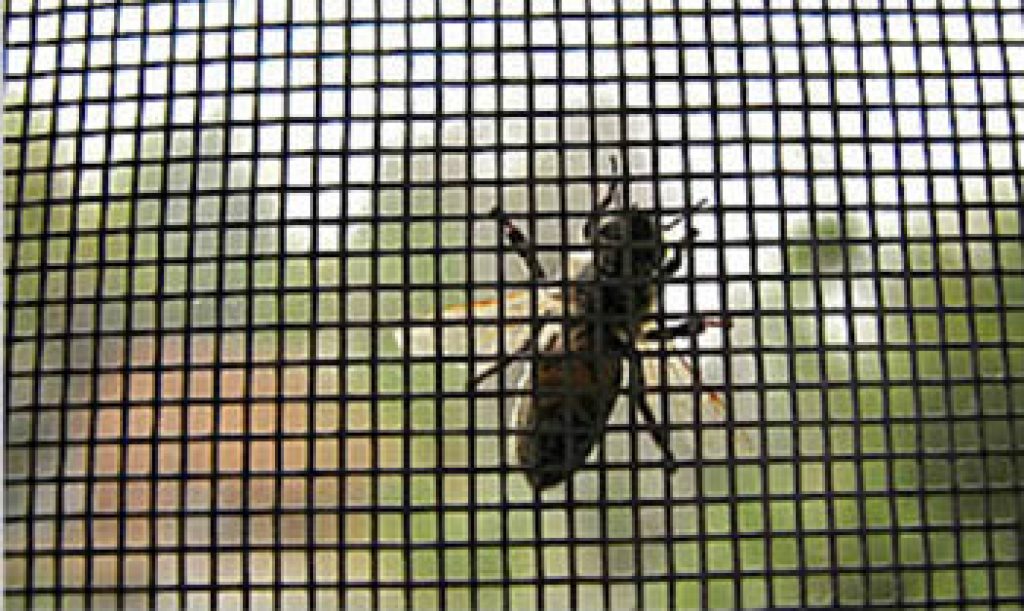


 CBD is a natural extract, not a drug. It is sold as a
CBD is a natural extract, not a drug. It is sold as a  CBD is ideal for many types. Mammals, fish, birds, and other animals all have the so-called endocannabinoid system, which is held responsible for the effect.
CBD is ideal for many types. Mammals, fish, birds, and other animals all have the so-called endocannabinoid system, which is held responsible for the effect.



 As long as you have your customer’s email, you can send advertisements freely to them and at any time. This is one of the best ways to advertise because most of the other ways require lots of money. Although you can pay to keep your emails at the top of your clients’ email list, most direct mail is done freely. You should make sure you have good subject headings and captivating ways of advertising, which will get you more sales. Some people will purchase your product or service only because they are used to seeing your brand in their email.
As long as you have your customer’s email, you can send advertisements freely to them and at any time. This is one of the best ways to advertise because most of the other ways require lots of money. Although you can pay to keep your emails at the top of your clients’ email list, most direct mail is done freely. You should make sure you have good subject headings and captivating ways of advertising, which will get you more sales. Some people will purchase your product or service only because they are used to seeing your brand in their email. Unlike video, audio, and picture advertisements, creating email advertisements is much easier and less time-consuming. For video, you have to write the perfect script, involve the perfect kind of music, the actors must be really good, and you need a good director. There is so much more to that, which takes so much time and money to create. It still takes a lot of time and money to air your advertisement. For email advertisement, you only need a good person with words and a few already existing images. It is as quick and as easy as you can type.
Unlike video, audio, and picture advertisements, creating email advertisements is much easier and less time-consuming. For video, you have to write the perfect script, involve the perfect kind of music, the actors must be really good, and you need a good director. There is so much more to that, which takes so much time and money to create. It still takes a lot of time and money to air your advertisement. For email advertisement, you only need a good person with words and a few already existing images. It is as quick and as easy as you can type.
 If communication with your warehouse is not effective, delivery schedules can be affected. Quick communication is vital as it helps get ready the ordered product for shipping and manage your inventory well. If possible, it should take a few minutes for the order to be processed by either the warehouse or your supplier.
If communication with your warehouse is not effective, delivery schedules can be affected. Quick communication is vital as it helps get ready the ordered product for shipping and manage your inventory well. If possible, it should take a few minutes for the order to be processed by either the warehouse or your supplier. One of the significant reasons why shipping companies have challenges with timely delivery is having complicated internal processes. Several of these companies use several systems and apps to complete the entire shipping process, which, in the end, makes a simple task hard. A small tweak in the documentation procedures can help deal with this problem.
One of the significant reasons why shipping companies have challenges with timely delivery is having complicated internal processes. Several of these companies use several systems and apps to complete the entire shipping process, which, in the end, makes a simple task hard. A small tweak in the documentation procedures can help deal with this problem. There is no way your shipping processes can be smooth if you have no idea where exactly the items in your warehouse are located. That is why you should consider using technology to locate the items quickly. If you are dealing with multiple products, manually searching for them can be time consuming and tiresome. Instead, you can use technology like barcode scanning to improve your efficiency. Plus, you get to avoid any instances of human error.…
There is no way your shipping processes can be smooth if you have no idea where exactly the items in your warehouse are located. That is why you should consider using technology to locate the items quickly. If you are dealing with multiple products, manually searching for them can be time consuming and tiresome. Instead, you can use technology like barcode scanning to improve your efficiency. Plus, you get to avoid any instances of human error.…
 Limited liability companies enjoy a lot of flexibility when it comes to membership. They can even have a membership of one person implying a person can start an LLC alone, therefore, have total control of the company and at the same time enjoy the benefits of having limited liability. What’s more, LLCs have no upper limit on the number of people who can be members. Moreover, foreigners, institutions, other LLCs, and even corporations can also join an LLC as members.
Limited liability companies enjoy a lot of flexibility when it comes to membership. They can even have a membership of one person implying a person can start an LLC alone, therefore, have total control of the company and at the same time enjoy the benefits of having limited liability. What’s more, LLCs have no upper limit on the number of people who can be members. Moreover, foreigners, institutions, other LLCs, and even corporations can also join an LLC as members. LLCs enjoy the best of all business structures when it comes to taxation because they have no defined federal tax classification. They could take up the tax status of various business forms like S corporations, C corporations, partnerships, and sole-proprietorships. The tax authority treats the LLC as either a sole-proprietorship or a partnership, depending on whether it has one or more than one owner.
LLCs enjoy the best of all business structures when it comes to taxation because they have no defined federal tax classification. They could take up the tax status of various business forms like S corporations, C corporations, partnerships, and sole-proprietorships. The tax authority treats the LLC as either a sole-proprietorship or a partnership, depending on whether it has one or more than one owner.
 While you may think that your problems are unique, other people have faced the same and have sought solutions for them. You could save yourself a lot of time and effort by asking your colleagues, friends, or family members if they know a reliable fortune teller. Most likely, some have visited a fortune teller to get information about their love life and will gladly refer you to one. The beauty of using this approach is that the people have already dealt with the fortune teller and can tell you how they work and so many things.
While you may think that your problems are unique, other people have faced the same and have sought solutions for them. You could save yourself a lot of time and effort by asking your colleagues, friends, or family members if they know a reliable fortune teller. Most likely, some have visited a fortune teller to get information about their love life and will gladly refer you to one. The beauty of using this approach is that the people have already dealt with the fortune teller and can tell you how they work and so many things. Most service providers have websites and social media pages where they advertise their services, and fortune tellers are no different. You could search online for a fortune teller near you or a better one who can offer online services or on-phone consultation. However, you have to be extra careful since the internet space has many scammers ready to optimize any opportunity presented by unsuspecting and innocent people seeking services. Avoid fortune-tellers who send you unsolicited emails or just a social media page but no verifiable information like a website or listing in the sites that review or market such services.
Most service providers have websites and social media pages where they advertise their services, and fortune tellers are no different. You could search online for a fortune teller near you or a better one who can offer online services or on-phone consultation. However, you have to be extra careful since the internet space has many scammers ready to optimize any opportunity presented by unsuspecting and innocent people seeking services. Avoid fortune-tellers who send you unsolicited emails or just a social media page but no verifiable information like a website or listing in the sites that review or market such services.
 The first stage is pretty mild. Most patients don’t even notice the symptoms, and they don’t know what’s coming. It feels as though you are catching a common cold. You might mistake the symptoms for fatigue or allergy. At this stage, your lungs are still healthy. But the function of your lungs starts to decline.
The first stage is pretty mild. Most patients don’t even notice the symptoms, and they don’t know what’s coming. It feels as though you are catching a common cold. You might mistake the symptoms for fatigue or allergy. At this stage, your lungs are still healthy. But the function of your lungs starts to decline.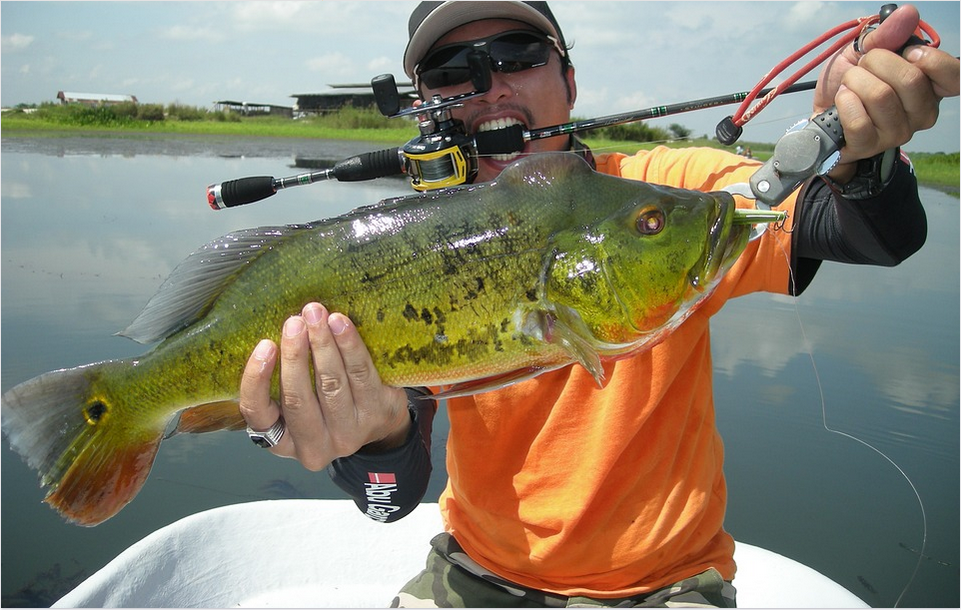
 Typically, fishing rods are made of fiberglass, graphite, or a composite of the two materials. The majority of bass rods on the market these days are made from graphite. These are super light, which is an advantage when spending long days fishing. Thanks to the lightness, the angler can detect any strike or bump or weed. High sensitivity is crucial with finicky fish or during adverse weather, which makes touch critical.
Typically, fishing rods are made of fiberglass, graphite, or a composite of the two materials. The majority of bass rods on the market these days are made from graphite. These are super light, which is an advantage when spending long days fishing. Thanks to the lightness, the angler can detect any strike or bump or weed. High sensitivity is crucial with finicky fish or during adverse weather, which makes touch critical. When we talk of the rod’s action, it refers to the stiffness or the flexibility that it portrays. It also shows where the rod first begins to bend. The action designations range from slow, moderate, fast, moderately fast, to extra fast. For example, additional fast action will bend only slightly, and only in the upper tip. Such a rod is best for heavy fishing cover and allows you to put more pressure on the bass.
When we talk of the rod’s action, it refers to the stiffness or the flexibility that it portrays. It also shows where the rod first begins to bend. The action designations range from slow, moderate, fast, moderately fast, to extra fast. For example, additional fast action will bend only slightly, and only in the upper tip. Such a rod is best for heavy fishing cover and allows you to put more pressure on the bass.
 Get as Many Members in the Planning Committee
Get as Many Members in the Planning Committee You need to have a plan B or plan C. Anything may happen in between your planning and the date of your departure. What if it will rain on that day? Indeed, there are many things that can change your plans. A plan B will not let you have to rush things if you need to change your original plan.
You need to have a plan B or plan C. Anything may happen in between your planning and the date of your departure. What if it will rain on that day? Indeed, there are many things that can change your plans. A plan B will not let you have to rush things if you need to change your original plan.
 It would be best if you started learning the fundamentals. If you do not know how to read music or have no basics of playing the piano, start with acquainting yourself with such. Learn the musical notes, scales, rhythm, and other basic stuff, including the proper posture. Skipping learning these things at the initial stages may stand in your way of mastering piano later.
It would be best if you started learning the fundamentals. If you do not know how to read music or have no basics of playing the piano, start with acquainting yourself with such. Learn the musical notes, scales, rhythm, and other basic stuff, including the proper posture. Skipping learning these things at the initial stages may stand in your way of mastering piano later. Like with so many other things, the internet has tons of online tutorials that you can rely on to teach yourself. However, getting yourself a teacher would be a great decision. Regular meetings with your piano teacher would assist you to attain your goals. Besides, the teacher will hold you accountable, making you remain on track to reaching your goals. Additionally, a teacher will be part of your support system, which could include your family and friends. They will encourage you as you learn the new skill.
Like with so many other things, the internet has tons of online tutorials that you can rely on to teach yourself. However, getting yourself a teacher would be a great decision. Regular meetings with your piano teacher would assist you to attain your goals. Besides, the teacher will hold you accountable, making you remain on track to reaching your goals. Additionally, a teacher will be part of your support system, which could include your family and friends. They will encourage you as you learn the new skill. One challenge is a busy schedule, but you can overcome it by setting a specific time for practicing every day. Without a set time to practice, chances are you will find yourself not having done it at the end of the day. For your success, commit yourself to put to use what you learned and to practice frequently.
One challenge is a busy schedule, but you can overcome it by setting a specific time for practicing every day. Without a set time to practice, chances are you will find yourself not having done it at the end of the day. For your success, commit yourself to put to use what you learned and to practice frequently.



 This may look like a generic idea, but only at a glimpse. In fact, there are so many styles of painting that use varieties of media. One example is
This may look like a generic idea, but only at a glimpse. In fact, there are so many styles of painting that use varieties of media. One example is  When you were a teenager, you probably wanted to play guitar and became a rockstar. Now, it all looks like a distant dream. But pursuing that urge to learn a musical instrument can benefit your life. The more diverse the instruments you can play, the more enhanced your creativity will be. For example, Prof. Frederic Ullen, from the Karolinska Institutet in Stockholm, concluded that our
When you were a teenager, you probably wanted to play guitar and became a rockstar. Now, it all looks like a distant dream. But pursuing that urge to learn a musical instrument can benefit your life. The more diverse the instruments you can play, the more enhanced your creativity will be. For example, Prof. Frederic Ullen, from the Karolinska Institutet in Stockholm, concluded that our  Technology and science can’t exist without language, but language can exist independently, even to the civilization itself. This general truth implies how language is the core of humanity. If you can master how to use the right words for the right circumstances, you have just learned the essence of life itself. This may sound like too much, but let’s consider how scientific fields are basically accurate and precise terminologies. Even politicians can get elected to the parliament because of their proficiency in using words.
Technology and science can’t exist without language, but language can exist independently, even to the civilization itself. This general truth implies how language is the core of humanity. If you can master how to use the right words for the right circumstances, you have just learned the essence of life itself. This may sound like too much, but let’s consider how scientific fields are basically accurate and precise terminologies. Even politicians can get elected to the parliament because of their proficiency in using words. 
 Through twitter, a business company can build its brand credibility, generate leads, and increase sales conversion when it has active followers who like, retweet, and comment on its tweets. To be able to do so, a business should be able to come up with interesting topics that will stir the interest of people.
Through twitter, a business company can build its brand credibility, generate leads, and increase sales conversion when it has active followers who like, retweet, and comment on its tweets. To be able to do so, a business should be able to come up with interesting topics that will stir the interest of people. Government Agencies
Government Agencies
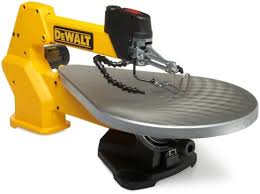 One thing that you must check is the motor. When buying a scroll saw, the motor will determine the performance of the saw. You need to get a saw with a powerful motor depending on the material that you want to cut.
One thing that you must check is the motor. When buying a scroll saw, the motor will determine the performance of the saw. You need to get a saw with a powerful motor depending on the material that you want to cut.
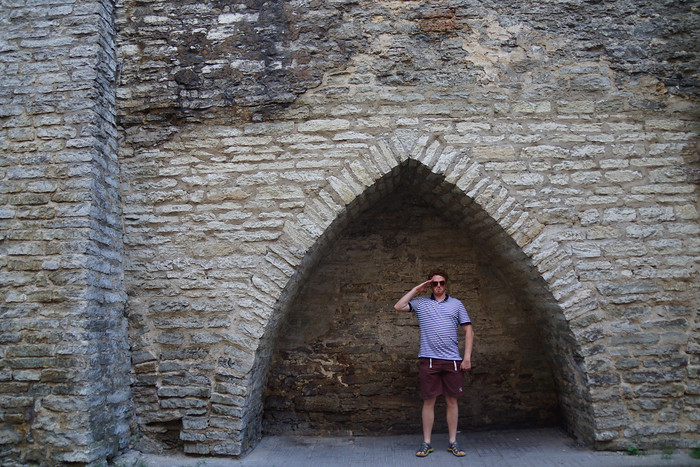
 When visiting Helsinki, you do not need a guidebook. This is one of the most laid-back cities with laid back people. Do not be so uptight and carry a guide because it will take away the fun. Like you probably know, there are no landmarks in Helsinki.
When visiting Helsinki, you do not need a guidebook. This is one of the most laid-back cities with laid back people. Do not be so uptight and carry a guide because it will take away the fun. Like you probably know, there are no landmarks in Helsinki.

 As we have mentioned a while ago, not all cat bed are equal. With this in mind, you should look for the best and quality bed that will make your cat comfortable. When you are considering the comfort of your cat, make sure that you choose the best size for your cat. You should buy a cat bed where your cat can stretch out comfortably. However, you should not get the one that is too big. Keep note that most of the cats feel more comfortable and secure in smaller places.
As we have mentioned a while ago, not all cat bed are equal. With this in mind, you should look for the best and quality bed that will make your cat comfortable. When you are considering the comfort of your cat, make sure that you choose the best size for your cat. You should buy a cat bed where your cat can stretch out comfortably. However, you should not get the one that is too big. Keep note that most of the cats feel more comfortable and secure in smaller places.
 Experience
Experience The amount being charged for such a treatment on your pet is another thing you need to put into consideration. You can compare prices between the different veterinarians in your area. Do not forget to consider their level of expertise in the process. Referrals from friends can help you get the best and affordable vet.…
The amount being charged for such a treatment on your pet is another thing you need to put into consideration. You can compare prices between the different veterinarians in your area. Do not forget to consider their level of expertise in the process. Referrals from friends can help you get the best and affordable vet.…
 Nowadays, there are different survey companies. How can you tell good ones from bad ones? One of the popular survey companies is Pinecone Research. Like most other survey companies, they have pre-qualifying questions. Therefore, if you do not complete the pre-qualifying questions, then you do not get the survey. Also, they do not have a lot of surveys to complete.
Nowadays, there are different survey companies. How can you tell good ones from bad ones? One of the popular survey companies is Pinecone Research. Like most other survey companies, they have pre-qualifying questions. Therefore, if you do not complete the pre-qualifying questions, then you do not get the survey. Also, they do not have a lot of surveys to complete.  You need to join this program if you want to make money with it. Go directly to their homepage and sign up. At certain times, registration is closed. If that is the case, you should try it another day. You need to fill out the online form with your demographic information. Remember that you can only join one family member household. If you try to have several times, they will cancel your memberships and forfeit your earnings.
You need to join this program if you want to make money with it. Go directly to their homepage and sign up. At certain times, registration is closed. If that is the case, you should try it another day. You need to fill out the online form with your demographic information. Remember that you can only join one family member household. If you try to have several times, they will cancel your memberships and forfeit your earnings.



 The conventional culture of printing industry takes the form of paper printing as one of the most conventional examples. However, wide format printing is indeed more versatile than it looks like. Different materials like wood, ceramics, and metal are also becoming common among printers when they work on their crafts. For this reason, it is safe to conclude that the subject of printing is no longer a matter of paper business, but it is more of an art matter where creativity is highly appreciated.
The conventional culture of printing industry takes the form of paper printing as one of the most conventional examples. However, wide format printing is indeed more versatile than it looks like. Different materials like wood, ceramics, and metal are also becoming common among printers when they work on their crafts. For this reason, it is safe to conclude that the subject of printing is no longer a matter of paper business, but it is more of an art matter where creativity is highly appreciated.



 Most of us have heard about the trendiest wallet material and find it hard to keep up. Leather has been on the headlines for the longest time, but there is just one problem. It varies, and not all types of leather are as genuine as they look.
Most of us have heard about the trendiest wallet material and find it hard to keep up. Leather has been on the headlines for the longest time, but there is just one problem. It varies, and not all types of leather are as genuine as they look. As we have seen, a proper wallet places a man at the top of the game. This is especially so if the wallet in question is stylish and trendy. Being a tricky feature, you will need a credible guide that will see you through every step.
As we have seen, a proper wallet places a man at the top of the game. This is especially so if the wallet in question is stylish and trendy. Being a tricky feature, you will need a credible guide that will see you through every step.

 the enjoyable things you will find there.
the enjoyable things you will find there. You should get a good or maybe professional theme for your travel blog. If you are serious about your site, then you should buy a premium theme that will help attract more people. One can get such themes from various established sites that have the right ideas for such blogs. Getting one will help improve your travel blog.
You should get a good or maybe professional theme for your travel blog. If you are serious about your site, then you should buy a premium theme that will help attract more people. One can get such themes from various established sites that have the right ideas for such blogs. Getting one will help improve your travel blog.
 We are living in an era of tabloids and smart-phones. Thus, there is a good chance that your child becomes less active. Recent studies have shown that kids who play with dogs are more active as compared to those who do not. It is advisable for a child to spend at least 11 minutes with a pet a day. For instance, it can help your kid to walk an extra mile.
We are living in an era of tabloids and smart-phones. Thus, there is a good chance that your child becomes less active. Recent studies have shown that kids who play with dogs are more active as compared to those who do not. It is advisable for a child to spend at least 11 minutes with a pet a day. For instance, it can help your kid to walk an extra mile. Pets teach the children to be empathetic and even kind towards the others. Kids who do not have pets are likely to become repulsive and cruel towards other animals. On the other hand, kids who have pets such as cats or dogs try to care more as compared to others. This is because the responsibility of taking care of a pet improves their self-esteem and makes them accountable.
Pets teach the children to be empathetic and even kind towards the others. Kids who do not have pets are likely to become repulsive and cruel towards other animals. On the other hand, kids who have pets such as cats or dogs try to care more as compared to others. This is because the responsibility of taking care of a pet improves their self-esteem and makes them accountable.
 You need a
You need a 